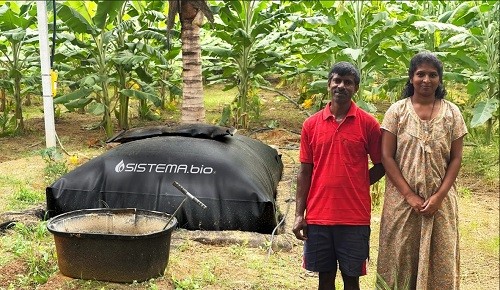Top 10 Beautiful Hindu Temples in The World

Refinement is the major objective of every Hindu Temple. Architectural styles, towering gopuras, magnificent sculptures, paintings, carvings, and decorations of world-famous temples are truly eye-catching things inside the temples for the people.
Here is the list of Top 10 Hindu Temples In The World
Vaitheeswaran Koil, Tamil Nadu, India, 15 Acres
Vaitheeswaran Koil is a temple of Lord Shiva that is located in the Tamil Nadu State of India. This temple is recognized as after Vaitheeswaran, they are one sort of Lord Shiva. Vaitheeswaran Koil is also one of the Navagraha streams in India that symbolizes Angaraka (Mars). It is supposed to be that some of the Shivalingas of this temple have been worshipped by Lord Rama, Lakshmana, Surya, and the Vulture King Jatayu. The temple has five major gopuras and enormous courtyards. There are metal pictures and rock statues of Lord Subramanya, Surya, and Durga inside the areas of the temple. The believers think that holy water and sacred ash of this temple have the strength to heal several diseases.
Angkor Wat, Cambodia, 500 Acres
This temple is spread over a huge land of 500 acres, the Angor Wat temple building in Cambodia is the biggest religious hierarchy in the world. It is a UNESCO world heritage site and icon of Cambodia. The Angkor Wat contains a hundred numbers of stone temples and continues the Khmer empire. This biggest temple complex was constructed in the 12th century by Khmer king Suryavarman II. Angkor Wat was initially devoted to Lord Vishnu and later, it came to be a Buddhist complex. Dissimilar to different Hindu temples, Angkor Wat confronts the West. Archaeologists acknowledged that Angkor Wat is not just a temple but also a tomb.
The experienced labourers of Saurvarman just utilized sandstones as the major element for the building of the biggest religious complex. The Angkor Wat is really a portrait of the religious mountain mount Meru. The midst tower of the temple is of a height of 65 meters and is enclosed by four smaller towers. The main gate of the Angkor Wat on the Westside has affluent ornamentations with monuments and carvings. There is also a 3.2 meters tall sculpture of Lord Vishnu made of sandstone. The inner complex of Angkor Wat is a three storey hierarchy. There are three major halls in the main complex of the temple. Every gallery too has a lotus-bud cast tower. The hall of thousands of Buddha homes hundreds of pictures of Lord Buddha. The central wall of Angkor Wat is also adorned with significant scenes from Hindu epics Ramayana and Mahabharata.
Akshardham, Delhi, India, 100 Acres
The large Akshardham Hindu temple area is present on the banks of the Yamuna river in Delhi. The temple complex is present across a region of 100 acres. It is considered as an idol of Hindu civilization, craft, and spirituality. The inner portion of this sacred building has the murtis of Sita Ram, Shiv Parvati, Radha Krishna, and Lakshmi Narayanan. The Akshardham temple establishment was built by Pramukh Swami Maharaj, The religious chief of the BAPS organization.
The Akshardham temple building is completely built of sandstone and marble. A beautiful Gajendra pith of this temple signifying the animal kingdom. It has 148 big sized elephants, 42 birds, and 125 human monuments built in pink stone. The 1070 feet tall Gajendra pith also indicates an intense connection of the antecedents of India and with nature. The central shrine of Akshardham temple contains 234 engraved pillars and 9 domes. It is also having the carvings of detailed knowledge about Hindu deities, plants, animals, and crafts.
Neasden Temple, London
Shri Swaminarayan Mandir in north-west London is like no other building in the capital. Made from 5,000 tonnes of Italian Carrara and Indian Ambaji marble and the finest Bulgarian limestone, it was carved by hand in India before being moved to the UK. It holds superlative Diwali celebrations, open to all, which this year include a fireworks display and hot snacks. It was inaugurated on 20 August, 1995.
Prambanan, Indonesia
This Unesco World Heritage site may be a complex inbuilt the 10th century and is Indonesia’s largest construction dedicated to Shiva. Telegraph Travel’s Natalie Paris writes: “Sat beside the fantastic Buddhist temple of Borobudur in Java, the Hindu ruins of Prambanan match up in terms of scale and wonder. The interior consists of quite 200 tower shrines that surround three inner temples. The complex was built to honour Shiva in 850 by the Mataram dynasty. Friezes show scenes from the Ramayana. It is reached from nearby Yogyakarta.”
Arul Mihu Navasakthi Vinayagar Temple, Seychelles
This temple is probably not remarkable for its size – it’s tiny – or because the figurines that decorate it are any longer spectacular than other Hindu temples. Rather, it’s because it’s so unexpected: a rainbow of colours against the tin roofs and low buildings of the Seychelles capital, Victoria, one among the world’s dinkiest major cities. This temple was built in 1992. It is named after Lord Vinayagar, the Hindu god of safety and prosperity, and maybe a place of worship for the islands’ Hindu community.
Koneswaram temple, Sri Lanka
Lord Shiva is the main deity worshipped at this superbly positioned temple, atop Swami Rock, a promontory overlooking Trincomalee, a port town in eastern Sri Lanka. Also worshipped at the complex – which dates back quite 2,000 years and was destroyed by colonial invaders within the 17th century, before being rebuilt – is Ravana, whose statue stands out over one side of Swami rock.
Sri Maha Mariamman Temple, Thailand
A riotous burst of colour that leaps out from a cluttered Bangkok street, the Thai capital’s most famous Hindu temple is certainly worth a glance. It was built in 1879. This is very busy, with a pooja performed six times a day. It also honours every god of the Hindu religion.
Meenakshi Amman Temple, Tamil Nadu, India, 17.3 Acres
The huge Meenakshi Amman temple may be a symbol of Madurai city and a remarkable representation of Dravidian architecture. This big Hindu temple is devoted to Lord Shiva and Goddess Parvathy or Meenakshi. Lord Siva too is named ‘Sundareswarar‘ in Madurai. This enormous temple whole area covers a neighbourhood of 17 acres.
There are 14 ‘Gopuras’ or pyramidal doors rise to an altitude between 40 and 50 meters. The four highest gopuras of the temple are considered as the entrances and smaller gopuras preside to the central statues. The gateway buildings of the temple confront four directions. The people generally choose the Eastern door of the temple as it directs to the main statue. The Multi-Storeyed gopuras of Meenakshi temple are also engraved with sculptures of animals, gods, and monsters.
The Madurai Meenakshi temple was initially built by Pandyan King Malavarman Kulasekara Pandyan in the 13th century. In the 14th century, Meenakshi temple was stolen by Muslim invader Malik Kafur. After this, the temple was renewed by Nayak emperor Viswanatha Nayakar in the 16th century. He renovated the temple in accord with the beliefs of ‘Shilpa Shastras‘, a historical Hindu book of arts and design. The main statue of Meenakshi temple is devoted to Sundareswarar (Lord Shiva) and Meenakshi (Goddess Parvathy). The shrine of Meenakshi and Lord Shiva is coated with golden plates. The central shrine of the temple is similarly encompassed by several other statues.
The ‘Mandapam’ of Meenakshi temple has 985 extraordinary tombs created from granite. Various of the pillars generate the music when we tap on them. There is also a craft museum in the temple that shows diagrams, pictures, and idols that demonstrate historical Indian temple architecture.
Jambukeswarar Temple, Tamil Nadu, India, 18 Acres
The Jambukeswarar or Thiruvanaikaval Shiva temple in Tiruchirapalli of Tamilnadu is one among the ‘Panchabhoota Sthalams’, which indicates one among five Shiva temples that symbolize five incredible components (land, water, air, sky, and fire). The four Shiva temples of ‘panchabhoota sthalams’ situated in Tamil Nadu and one in Andhra Pradesh. The Thiruvanaikaval temple denotes ‘water’. The central shrine of the temple also has a belowground water passage. The central God of the temple is Jambukeswarara, one kind of Lord Shiva. According to mythical understandings once Akilandeswari (Incarnation of Goddess Parvathy) arrived at the current location from ‘Kailasam’ (mount Kailash) to perform penance.
She prepared a lingam with water of the Kaveri River. This is the reason the Thiruvanaikaval temple denotes water or never, one of the main components of nature. The Shiva lingam of Thiruvanaikaval temple is believed as ‘Appu lingam’ implies lingam made from water. The Thiruvanaikaval temple was created by the ruler Kocengannan Chola in the 1st century. The temple also involves notations and monuments from the Chola time.
There are five compartments within the Jambukeswarar temple area. The huge outer wall of the temple area is referred to as Vibhuti Prakara, it is having a length of 1 mile and a height of 25 feet. The fourth compartment of the temple encloses 196 tombs. There is also a small tank filled by natural streams. The main area has two gopuras at 100 feet and 73 feet high. The central statue, Appu Lingam is present at the inner precinct of the temple.
















